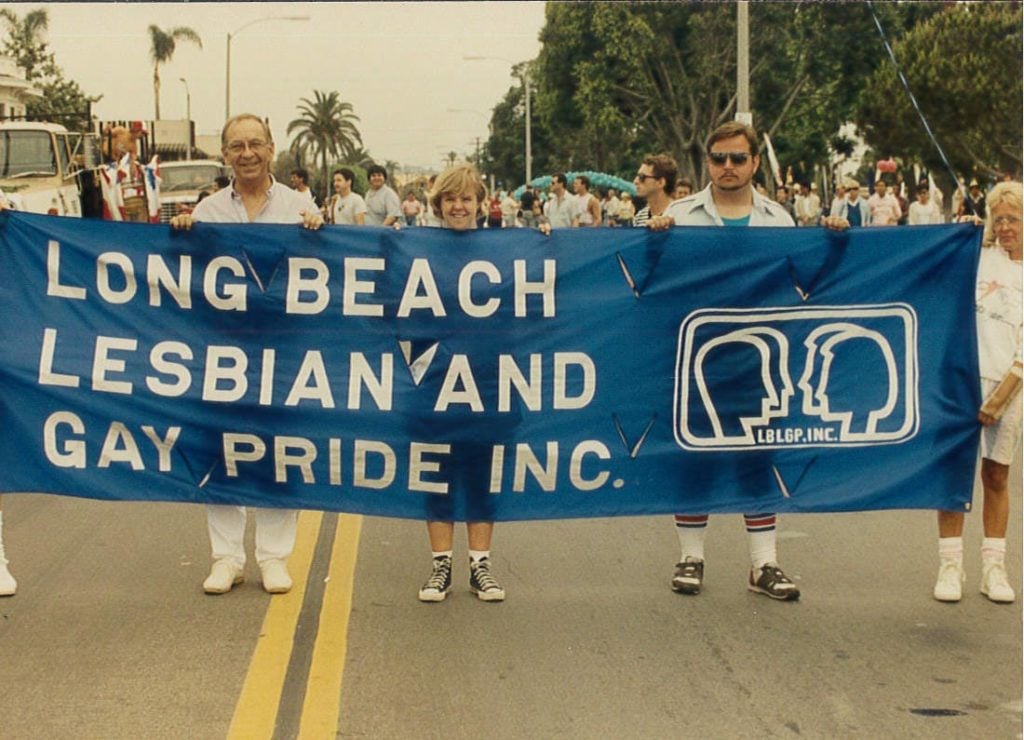Long Beach Pride will take over Shoreline Drive this weekend for its 40th anniversary festival and parade.
Some quick history on Long Beach Pride. Long Beach Gay and Lesbian Pride, the nonprofit group that runs the festival and parade, was cofounded in 1983 by Marilyn Barlow, Bob Crow, and Judi Doyle.
The festival and parade started in 1984 as an effort by the local gay community to make its own identity while living in the shadow of Los Angeles’ pride event.
The first parade lasted just 30 minutes, and the two-day festival drew 5,000 people to Palm Island, which was located at the end of Pine Avenue in what is Shoreline Drive.
Here are three things you didn’t know about the history of Long Beach Pride.
City hostile to Long Beach Pride
For decades, the festival was scheduled the weekend before Memorial Day because the city didn’t want it held during the summer season, which begins with Memorial Day weekend.
As a result, the city banned all private events in the park after Memorial Day.
From the beginning, the city went out of its way to block the parade.
“The city tried a variety of ways to make us go away,” Doyle told Q Voice News. “But we weren’t going away without a fight.”

Members of Long Beach Lesbian and Gay Pride march in a parade in the mid 1980s. The history of Long Beach Pride includes wearing bulletproof vests and fighting a hostile city that made several efforts to block the festival and parade. Photo: Long Beach Lesbian and Gay Pride.
Wearing bulletproof vests
Nothing says gay Pride like wearing a bulletproof vest.
In the days leading up to the second Pride parade in 1985, Doyle, then president of Long Beach Gay and Lesbian Pride, received a death threat on the answering machine at the Pride office.
The caller, Doyle remembers, said, ‘You slipped by us the first year, but it’s not going to be easy this time. We suggest you don’t march this year. There could be someone who will take you down. There will be plenty of us there.’
“It was chilling,” Doyle said in an interview. “But they weren’t very articulate.”
Doyle said she reported the call to the police, who told her she couldn’t march in the parade without a bulletproof vest.
“I didn’t have a death wish, and I didn’t want to be a martyr. I did consider the dangers,” Doyle said. “But I came to a place where I decided I wouldn’t live in fear.”
Doyle wore her bulletproof vest, but no bullets were fired, though some people threw eggs at the marchers, she said.
Protesters also held signs with the words “FAGS” and “DYKES GO HOME,” but Doyle and the group did not back down.
Long Beach Pride sued city for discrimination
Here’s our third piece of Long Beach Pride history. In 1985, city officials told Long Beach Pride organizers that they needed $1 million in liability insurance for the parade. A national search failed to find a company willing to back the event, but festival organizers got a court injunction and held the parade without a permit.
When organizers found out the city waived or reduced the insurance requirement for other groups, Long Beach Pride, with the help of the ACLU, sued the city for discrimination.
In 1990, Pride’s lawsuit against the city went to court. In 1991, a Los Angeles Superior Court judge ruled Long Beach’s ordinance permitting the city manager to require liability insurance on the basis of a parade’s subject matter was unconstitutional and violated the 1st Amendment. The city appealed the decision, but the California Court of Appeals upheld the lower court ruling.
The city eventually agreed to develop uniform requirements for all groups staging large events.
